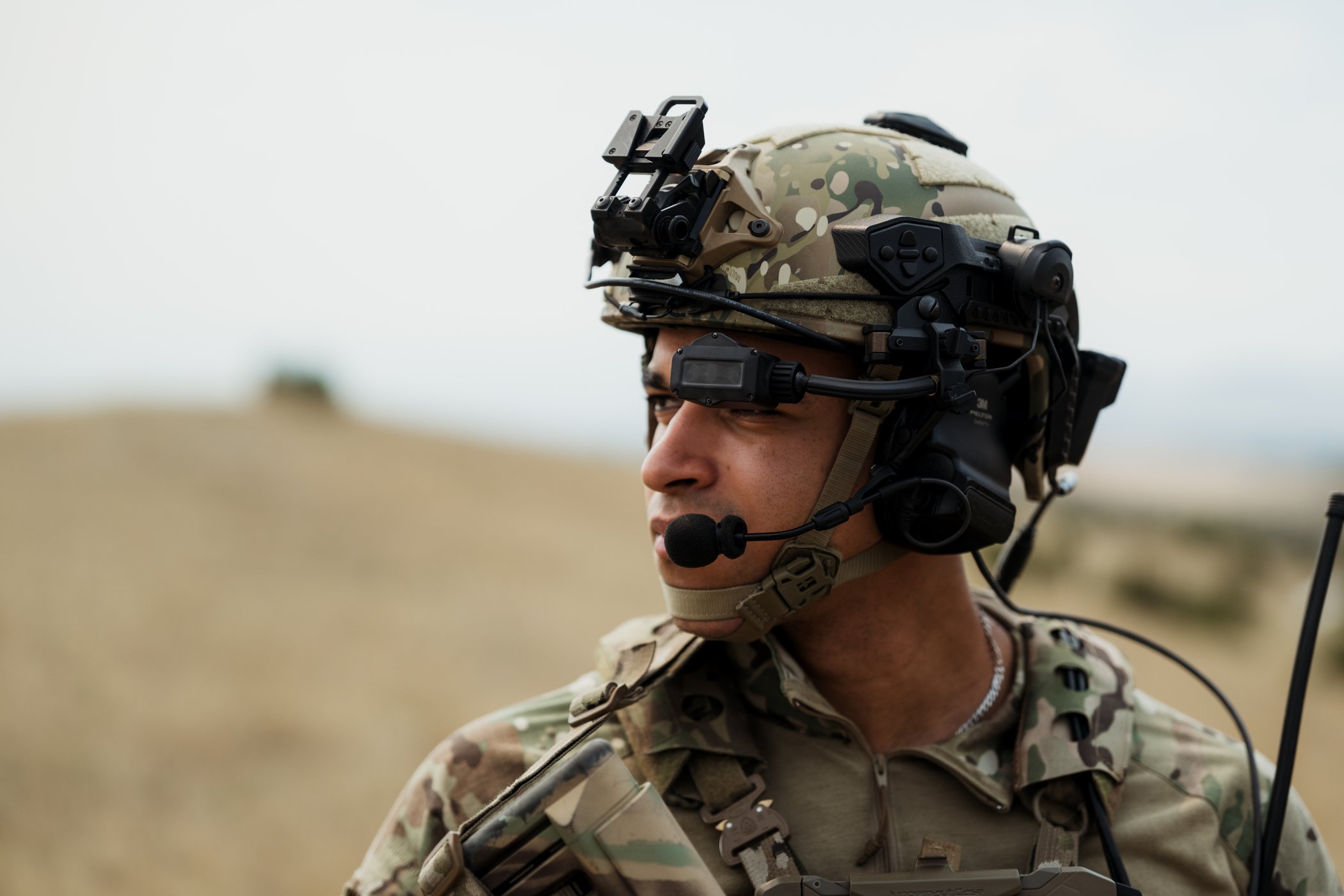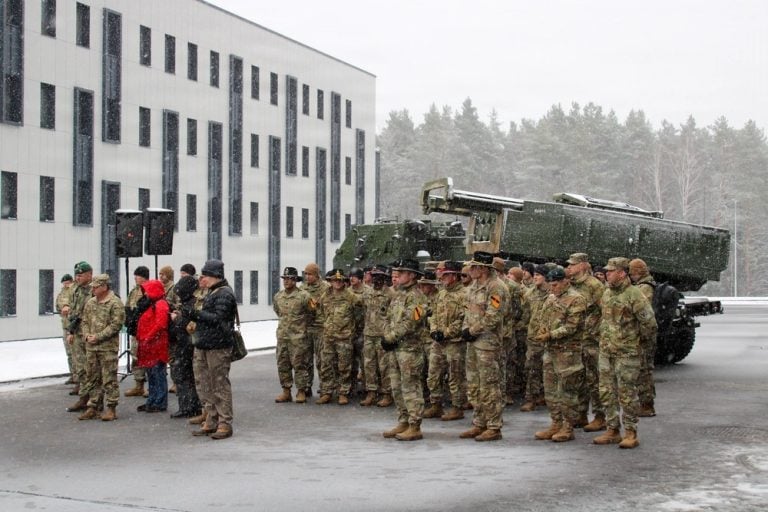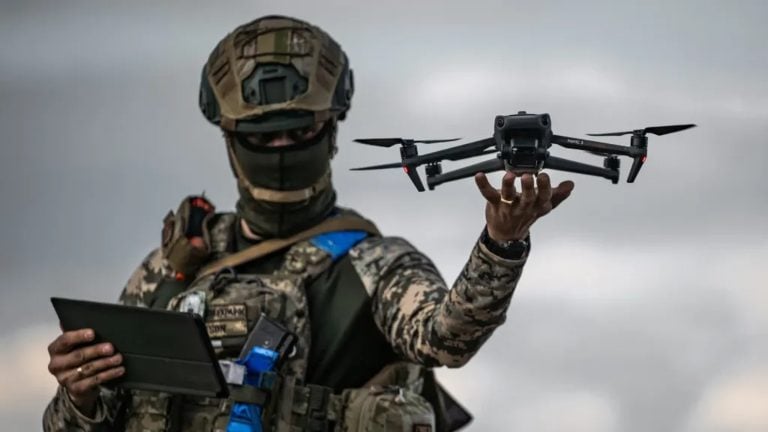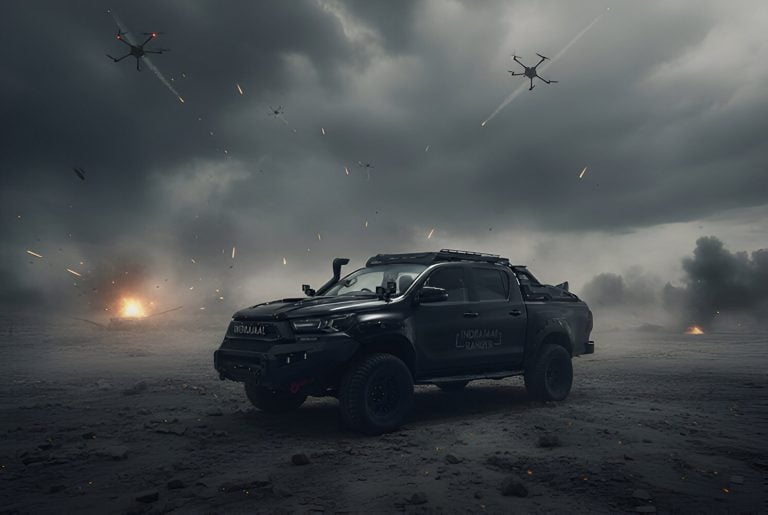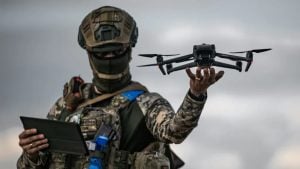At the recent AUSA expo in Washington, DC, defense technology innovator Galvion unveiled its CORTEX line, a modular system designed to transform combat helmets into connected data and visualization platforms. While the protective aspects of helmets are still paramount, Galvion is broadening this foundation to integrate advanced electronics and visualization features aimed at enhancing both lethality and survivability for individual warfighters.
The representative from Galvion clarified, “CORTEX is intended to make your helmet smarter and to bring some electronics and visualization capability to the helmet platform itself.” The goal is to go beyond mere protection by incorporating data and visual information that heighten operational effectiveness and situational awareness.
A key aspect of the CORTEX line is its first product, the CORTEX Echo, which is a bolt-on system compatible with various helmet platforms. Demonstrated using Galvion’s Caiman helmet, the Echo marks a significant progression in practical deployment for heads-up displays, moving from concept to reality.
The CORTEX Echo includes an on-helmet compute unit that channels data through the helmet’s rail system to different connection points. Control mechanisms are conveniently placed on the left temple, and a connector called the Visual Augmentation System (VAS) enables integration with a range of display technologies tailored to mission requirements. Display options are versatile, featuring both occluded and transparent overlays, allowing users to maintain full situational awareness while accessing critical information.
Integration with existing systems is another significant feature of the CORTEX Echo. It connects to the Android Team Awareness Kit (ATAK), a tactical mapping and situational awareness application extensively used among U.S. and allied forces. Data transmitted from devices running ATAK is relayed through a downlink cable to the helmet’s compute system, facilitating a direct line of sight to essential maps, alerts, and sensor data.
Galvion has also created a specialized ATAK plug-in called Alert Center, which allows operators to personalize display layouts and mission profiles swiftly. This addresses a long-standing issue in soldier tech where critical data is often relegated to chest-mounted screens, causing operators to look down and lose awareness of their environment—a perilous situation in a threatening setting.
Galvion distinguishes its technology from competing solutions through two major innovations: open architecture and an intuitive user interface. The company champions open architecture, allowing users to integrate any available heads-up display technology rather than being confined to proprietary systems. This flexibility allows warfighters to select the display that best suits their unique operational needs.
Additionally, the interface of the Alert Center application has been designed for ease of use, closely resembling a smartphone. Users can configure display layouts without needing a manual, easily adjusting and dragging elements to customize their interface. This customization extends to different operational phases, enabling the display to shift focus depending on whether an operator is infiltrating, engaging, or exfiltrating.
Beyond helmets, the CORTEX system’s underlying architecture can support a variety of digital gear, such as rifle scopes and watches. This adaptability means that everything from weapon sights to wearable tech can be part of an integrated ecosystem. Galvion has also developed a software developer’s kit to allow rapid third-party integration of custom ATAK plugins and applications.
The system showcases flexibility in power and connectivity options, accommodating various operational requirements. Power can be supplied through a downlink cable from on-body sources, or users can opt for head-mounted power solutions, whether disposable or rechargeable. For operations prioritizing agility, wireless data transmission is also possible.
Notably, while demonstrated on Galvion’s Caiman helmet, the CORTEX Echo can be integrated onto helmet platforms from other manufacturers. Such compatibility permits customers to maintain their preferred helmet systems while enhancing them with CORTEX features.
In terms of logistical benefits, Galvion has designed the CORTEX Echo with sizing adjustments that facilitate the use of the same rails and electronic components across different helmet sizes. This standardization simplifies inventory management and reduces the total number of components required.
During the expo, a concept prototype named CORTEX Evo was also previewed, which aims to fully integrate helmet and electronic components, eliminating the need for bolt-on parts. This evolution signifies a potential paradigm shift where the helmet itself serves as the central computing platform, reducing weight and refining design.
The CORTEX line epitomizes a burgeoning trend in modern warfare: transitioning from isolated protective gear to interconnected systems that significantly bolster situational awareness. By emphasizing open architecture, user-friendly interfaces, and fast integration capabilities, Galvion is addressing historical limitations in tactical display systems. As wearable technology increasingly converges with digital networks, systems like the CORTEX Echo may represent the future where personal defense and data systems are seamlessly intertwined.
